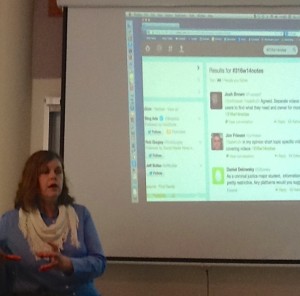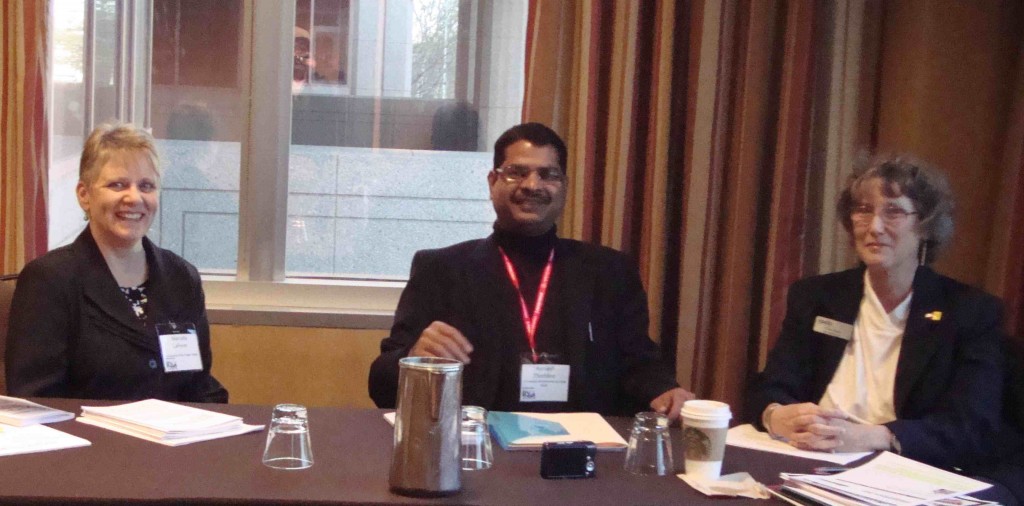 Well known social media marketing consultant, Wendy McClelland, gave a well-received presentation last week to the newly launched CMNS 316, Communicating for Social Media. Wendy’s enthusiasm for leveraging the power of social media got the class hyped up and ready for this brand new course at the University of the Fraser Valley.
Well known social media marketing consultant, Wendy McClelland, gave a well-received presentation last week to the newly launched CMNS 316, Communicating for Social Media. Wendy’s enthusiasm for leveraging the power of social media got the class hyped up and ready for this brand new course at the University of the Fraser Valley.
Twenty-five students slowly got the hang of using Twitter to write their notes instead of pulling out pencil and paper, and took the opportunity to tweet questions for Wendy to answer. The classroom was rife with electronic/digital/mobile technology with one projector and screen for Wendy’s slides and another for the Twitter feed; not to mention all the laptops and cell phones.
In the upcoming sessions of the course, students from the Communications, Business, Computer Information Sciences, Global Development Studies and other departments will be a exploring topics from social media theory to the latest digital tools and applying their knowledge to various forms of social media writing practices. Each participant will be part of a small team that will pitch a social media plan to a local not-for-profit or social enterprise. Clients include the Abbotsford Food Bank, Yarrow Ecovillage, Fronya Boutique, Family Life and the Mission Folk Festival.
If you are tired of being told to put your cell phone away during class, think about signing up for a course that improves your social media game and encourages you to friend, like, and tweet while the instructor is talking.
*****************************
Dr. Marcella LaFever (University of New Mexico, 2005) is an Associate Professor in the Communications Department at the University of the Fraser Valley. She specializes in intercultural communication and brings that expertise to various subjects such as communication for workplace, instruction, social media, team and public speaking contexts.

